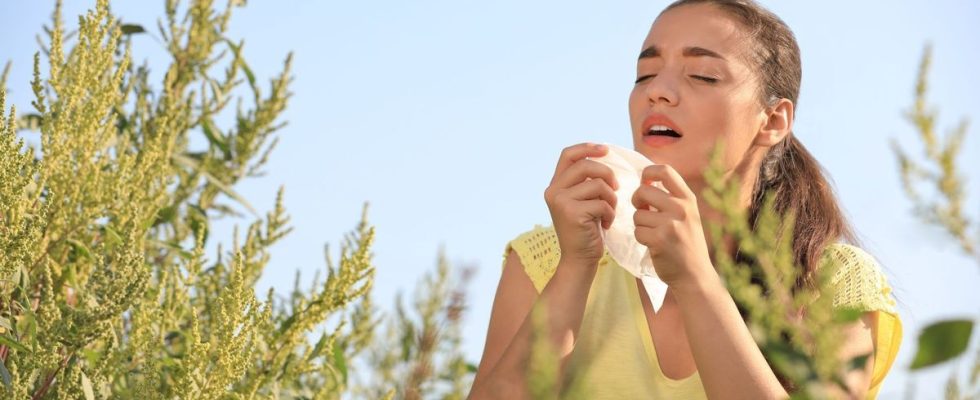Published on
Updated
Reading 2 mins.
With the temperatures rising sharply these days, especially in the South-East region of France, the allergic risk linked to ragweed will be greater. Know how to protect yourself!
The days to come are likely to be hot throughout France, and particularly in the South-East, again faced with a wave of heat waves. It is precisely this region of France which is also very exposed to the allergic risk linked to ragweed: the Auvergne Rhône-Alpes region, which is the most invaded by the plant, in particular the species with sagebrush leaves.
Three types of ambrosia monitored in France
Plants native to North America, ragweed develops quickly and is therefore very allergenic. There are three species monitored in France:
- Mugwort-leaved Ambrosia (Ambrosia artemisiifolia);
- Ambrosia trifid (Ambrosia trifida);
- Smooth-eared ragweed (Ambrosia psilostachya).
Symptoms amplified by high heat
If you currently have a runny nose or itchy eyes, you are probably allergic to this type of pollen. According to the RNSA, the National Aerobiological Surveillance Network, ragweed pollen concentrations are currently at a moderate level and will increase in the coming days and weeks.
Like other pollens, ragweed pollen can cause seasonal allergic rhinitis, with symptoms such as tracheitis, with dry cough, which can go as far as asthma attacks. In addition, the eyes and the skin are not spared, with sometimes allergic conjunctivitis and skin disorders such as hives or eczema.
As with all allergies, there are a few simple rules to follow to avoid too much exposure to ragweed pollen. It’s important to :
- Rinse your hair at night;
- Ventilate your home at least 10 minutes a day before sunrise and after sunset;
- Do not dry clothes outside;
- Keep your car windows closed while driving;
- Avoid sports activities outside;
- Avoid mowing your garden.
